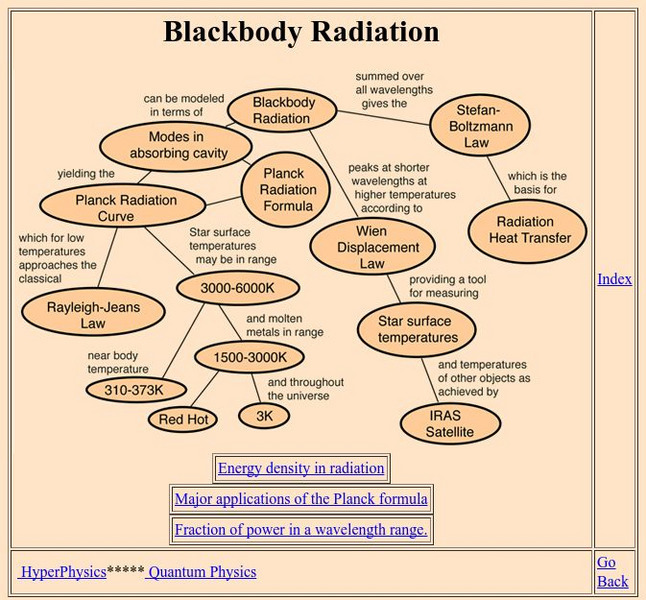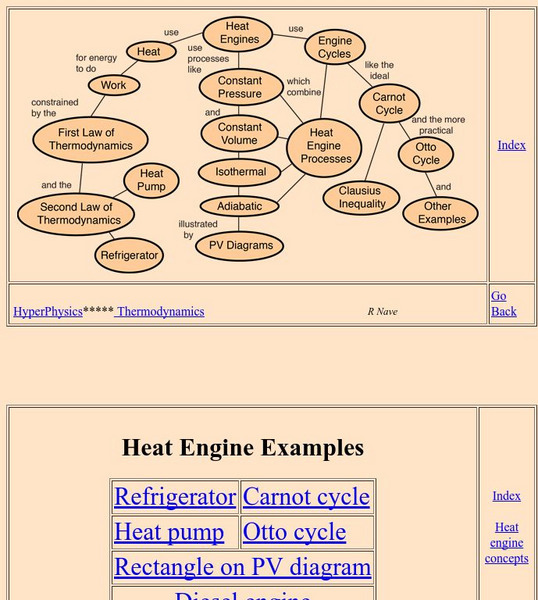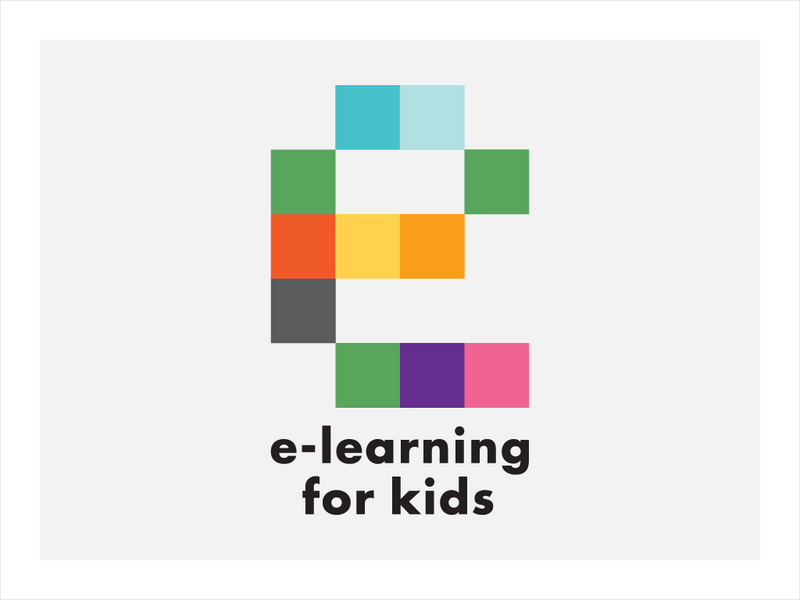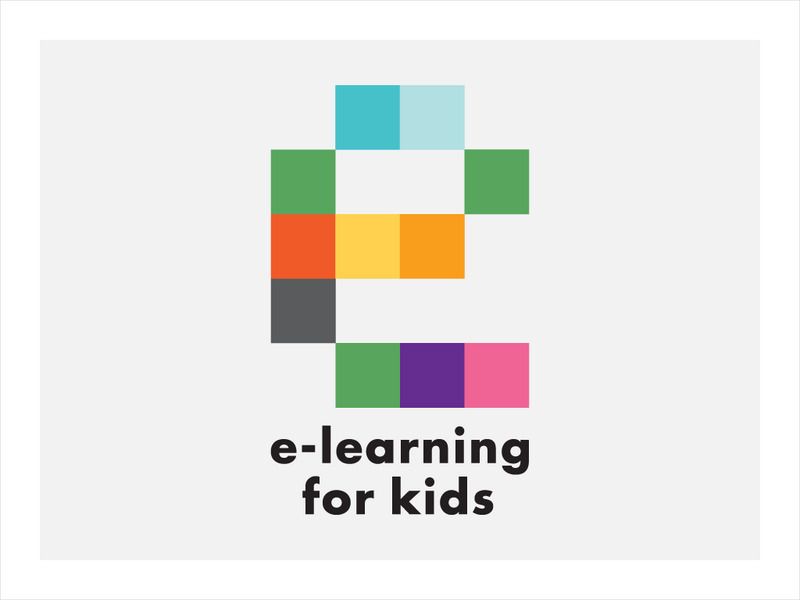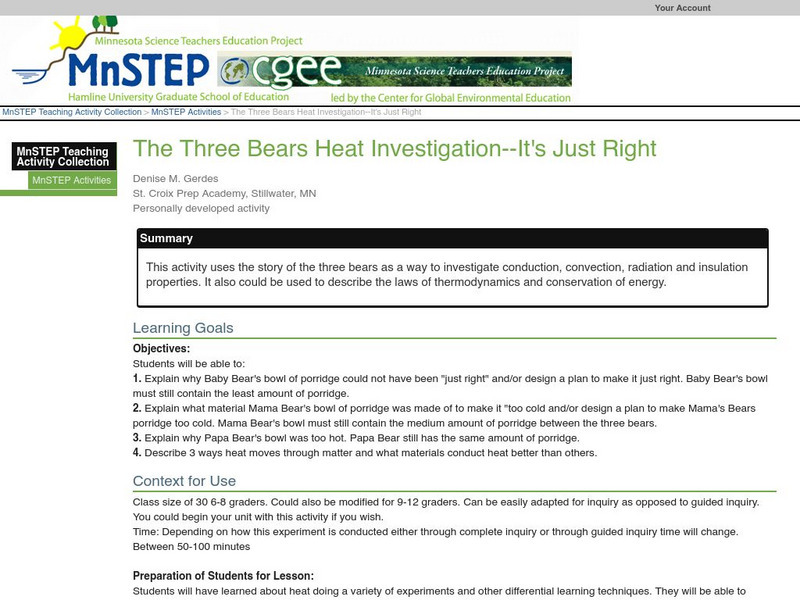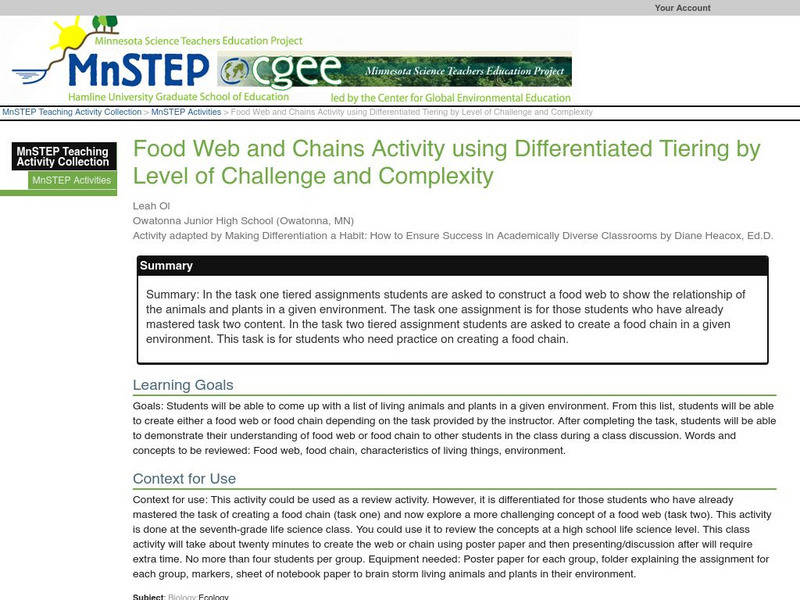Utah Education Network
Uen: Trb 3:5 Investigation 6 Heat From Machines
Learn how heat energy can be produced by mechanical and electrical machines.
PBS
Pbs Learning Media: Mechanical Waves
Learn about mechanical waves, which transfers energy from one place to another through liquids, gases and solids, with this interactive lesson.
OpenSciEd
Open Sci Ed: 6.2 Thermal Energy
This Thermal Energy unit has students investigating two ways to transfer energy into a drink: (1) the absorption of light and (2) thermal energy from the warmer air around the drink. They are then challenged to design their own drink...
Open Ed
Open Ed Sci: 8.3 Forces at a Distance
This unit launches with a slow-motion video of a speaker as it plays music. In the previous unit, students developed a model of sound. This unit allows students to investigate the cause of a speaker's vibration in addition to the effect.
Georgia State University
Georgia State University: Hyper Physics: Heat Flow to Hotter Region
Heat flow from a hot region to a cold region is described and explained. Applications of this phenomenon (specifically heat pumps and refrigerators) are discussed. Excellent graphics.
Georgia State University
Georgia State University: Hyper Physics: Heat Engine Concepts: The Otto Cycle
Schematic diagrams illustrating the operation of a four-stroke engine cycle. Interactive buttons allow you to step through the various steps of each engine cycle. Each graphic is accompanied by an excellent explanation.
Georgia State University
Georgia State University: Hyper Physics: Heat Engine Concepts: Carnot Cycle
The Carnot cycle is described, illustrated and explained. The Carnot efficiency equation is given and interactive JavaScript form allows the visitor to investigate the effect of the reservoir temperature and the sink temperature upon the...
Georgia State University
Georgia State University: Hyper Physics: Zeroth Law of Thermodynamics
The principle of thermal equilibrium is discussed and explained. The zeroth law of thermodynamics is stated. Links to several other pages with related information are provided.
Georgia State University
Georgia State University: Hyper Physics: Heat Engine Cycle
The heat engine cycle is defined and discussed. So pressure-volume diagrams are introduced and their use in depicting the cycles of a heat engine is demonstrated. Informative graphics are accompanied by reason-filled explanations.
Georgia State University
Georgia State University: Hyper Physics: Blackbody Radiation
An indexing page for the HyperPhysics site. This page includes a concept map of links to pages that contain information related to blackbody radiation. Each individual page consists of informative graphics and clear explanations.
Georgia State University
Georgia State University: Hyper Physics: Temperature
A page describing the concept of temperature and temperature scales. An interactive JavaScript form allows the visitor to investigate the relationship between the Kelvin, Celsius and Fahrenheit scales; enter a value and allow the...
Georgia State University
Georgia State University: Hyper Physics: Thermal Expansion
Defines thermal expansion and elaborates on the concept of linear expansion. Provides the equation for linear expansion and includes an interactive JavaScript form which allows the visitor to investigate the relationship between...
Georgia State University
Georgia State University: Hyper Physics: Expansion Concepts
An indexing page from Georgia State University Physics Department which includes links to various other pages with information pertaining to thermal expansion. From expansion coefficients to equations to calculation and practice pages,...
Georgia State University
Georgia State University: Hyper Physics: Area Expansion
The concept of area expansion is presented and explained. An equation for calculating the amount of area expansion is provided.
Georgia State University
Georgia State University: Hyper Physics: Bimetallic Strips
The operation of bimetallic strips is explained and illustrated. The principle of thermal expansion is related to their operation. A link to applications of bimetallic strips is provided.
Georgia State University
Georgia State University: Hyper Physics: Heat Engine Concepts
An indexing page for the HyperPhysics site. The page contains a concept map of links to a variety of other pages which discuss concepts related to heat engines. All pages contain informative graphics and excellent explanations.
E-learning for Kids
E Learning for Kids: Science: Bermuda Triangle: How Is Energy Transferred Between Organisms?
Bermuda is a mysterious place. Meet Scotty and his family and join them on their holiday to learn about energy transfer in ecosystems.
E-learning for Kids
E Learning for Kids: Science: Titanic Shipwreck: What Are Food Webs?
Jorge is a cook in an underwater restaurant. He knows a lot about food webs. Dive in and learn about it with him.
Science Education Resource Center at Carleton College
Serc: Energy Pyramids in Different Biome Locations
A research activity where young scholars research the various biotic and abiotic factors that combine to make up a biome. The end product will be the creation of a PowerPoint presentation that identifies these factors and the creation of...
Science Education Resource Center at Carleton College
Serc: Food Chains: Nature's Restaurant
Learners begin this lesson by making observations and recording evidence of the variety of living things in local nature site. Students use reference materials to research predators and food of the animals they observed, then illustrate...
Science Education Resource Center at Carleton College
Serc: The Three Bears Heat Investigation It's Just Right
This activity uses the story of the three bears as a way to investigate conduction, convection, radiation, and insulation properties. It also could be used to describe the laws of thermodynamics and conservation of energy.
Science Education Resource Center at Carleton College
Serc: Construction of a Complex Machine Through Classroom Collaboration
Students take a simple task and make it much more complicated using a cardboard box. Each group must use a minimum of six simple machines utilizing at least four types of simple machines. The goal is to keep the initial impulse moving...
Science Education Resource Center at Carleton College
Serc: Using Plant Surveys to Study Biodiversity
An extended field investigation intended as launch into several concepts in environmental science including biodiversity, human impacts on natural systems, and energy transfer in ecosystems.
Science Education Resource Center at Carleton College
Serc: Differentiated Tiering Food Web and Chains Activity
Two differentiated tasks about food chains and webs. In the more challenging task, students construct a food web to show the relationship of the animals and plants in a given environment. In the lower level task, students create a food...








